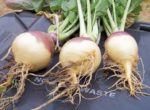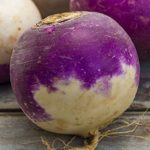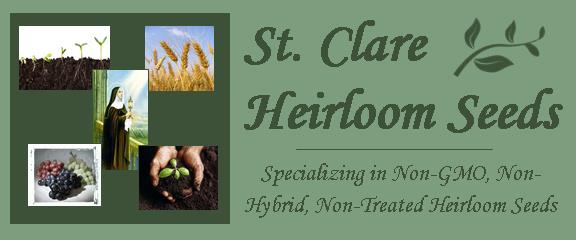Rutabaga Seeds
Scroll down to see seeds for sale!
A cross between a cabbage and a turnip, rutabaga was developed by a Swiss botanist 300 years ago, but didn’t appear in the US until the early 1900’s. Tolerant of the cold and drought resistant, this hardy vegetable was first used for feeding livestock. Since the rutabaga is unusually high in protein and easy to digest, it quickly spread to the kitchen table.
Low in carbohydrates, rutabaga is a healthy substitute for the less nutritious white potato, and can be boiled, roasted, or mashed, used in soups, and is delicious in cakes. Blending rutabaga with onion or garlic will intensify the sweetness, and reduce any bitterness.
Unusually high in iron, this tasty vegetable is also high in antioxidants and vitamins B, K, E, C and A, which strengthens connective tissue and the immune system. Rich in carotenoids, iron, manganese, phosphorus, magnesium, calcium, zinc and potassium, and beneficial to the digestive system, rutabaga is useful for lowering blood pressure and cholesterol, building strong bones and best of all, can even help lose weight! Rutabaga is surprisingly beneficial to your health, as it can reduce premature aging, improve eyesight, and strengthen the organs. The high protein and low calorie count makes this delicious vegetable perfect for weight-loss diets and vegetarians.
Grown mostly in the cooler northern areas, rutabaga is frost-resistant. When ordering your St. Clare’s heirloom rutabaga seeds, keep in mind they should be planted around three months prior to the first frost in the fall. The best time to harvest rutabaga is when they are around the size of a fist; the larger the root, the more bitter they will taste.
Showing all 2 results
-

Rutabaga – American Purple Top
$2.59 View ProductAdd to cart(Brassica napus var. napobrassica) 90 days. American Purple Top Open Pollinated Rutabaga have huge round yellow roots with a rich purple crown. American Purple Top Rutabaga is firm sweet and has a good flavor. The flesh turns orange when cooked.
300 Seeds per pack
-

Rutabaga – Laurentian
$2.59 View ProductAdd to cart(Brassica napus var. napobrassica) 90 days. Laurentian is an Improved American Purple Top Strain with creamy yellow globe roots that are deep purplish red above ground. Almost neckless with 4″ to 6″ roots that are uniform, mild, firm, and have a good flavor.
300 Seeds per pack
Showing all 2 results

